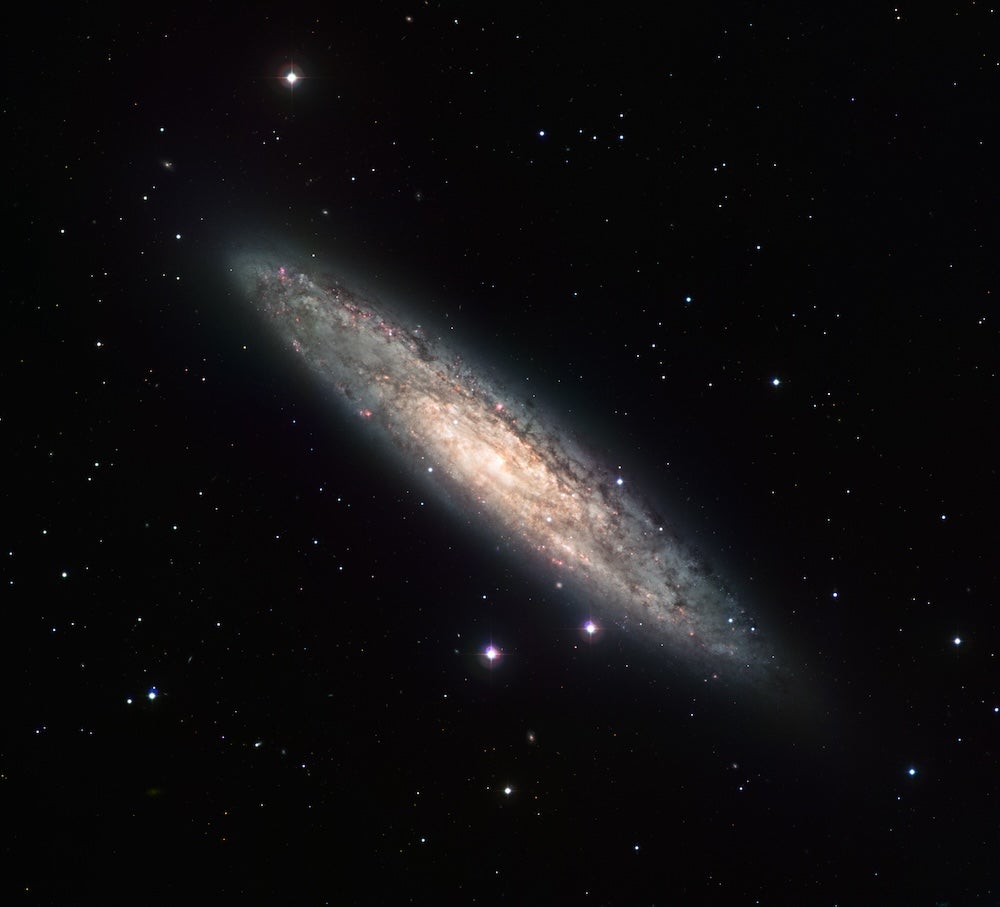In the late 19th century, astronomer John Louis Emil Dreyer compiled The New General Catalogue of Nebulae and Clusters of Stars, or NGC, from several past catalogs.

NGC 253 in Sculptor is just one of thousands of objects cataloged in The New General Catalogue of Nebulae and Clusters of Stars. Credit: ESO
The designation M stands for Messier objects. I understand the history behind how these were identified and cataloged. But what are NGC objects? Where did NGC come from and how is it applied?
Dean Treadway
Jesup, Georgia
Anyone who has developed an interest in stargazing has certainly heard of the Messier and NGC catalogs. These publications list thousands of outstanding nonstellar objects, and both have a rich history.
Inspired by the six-tailed comet of 1744, Charles Messier made a career of hunting comets. Messier’s frustration with finding “fuzzy” bodies that weren’t comets resulted in his famous list of 103 objects, published in 1781, later revised by other astronomers to 110 objects. His list still provides challenges for any observer.
Five years later, in 1786, English astronomer William Herschel published his Catalogue of Nebulae and Clusters of Stars. With revisions, his publication eventually held 3,500 nebulae, clusters, and galaxies. William’s son, Sir John Herschel, also produced a catalog of nonstellar objects. These catalogs often overlapped and were not always consistent in their listings.
Astronomer John Louis Emil Dreyer left his native Denmark in 1874 to work with Irish astronomer William Parsons, Earl of Rosse. Dreyer eventually moved to the directorship of the Armagh Observatory in Ireland, where he pursued many astronomical projects. There was a growing need to organize the astronomical catalogs compiled over the last century. Dreyer submitted a proposal to the Royal Astronomical Society to create a supplement for these early catalogs. However, the society encouraged Dreyer to compile a new and original list. This would become The New General Catalogue of Nebulae and Clusters of Stars, or NGC.
Dreyer found sorting through the thousands of objects listed in previous catalogs to be a daunting task. He even attempted to visually verify at least some of the objects with his own telescope. It soon became apparent that this was not practical. The nebulae, star clusters, galaxies, and more listed in past catalogs had been observed with telescopes ranging in size from Messier’s 4-inch refractor to the 72-inch reflector of Lord Rosse. Verifying every object listed in previous catalogs would need to be accomplished by many other observers, who could then make the necessary corrections.
The first edition of the NGC, published in 1888, listed 7,840 objects and contained errors copied from earlier sources. However, Dreyer was meticulous in citing the references he used so other astronomers could verify them. Later editions of the NGC have been revised, corrected, and supplemented with an additional 5,386 objects in the so-called Index Catalogues (IC).
After more than a century, The New General Catalogue of Nebulae and Clusters of Stars is still an indispensable guide to nebulae, star clusters, and galaxies for professional and amateur astronomers alike.
Raymond Shubinski
Contributing Editor

